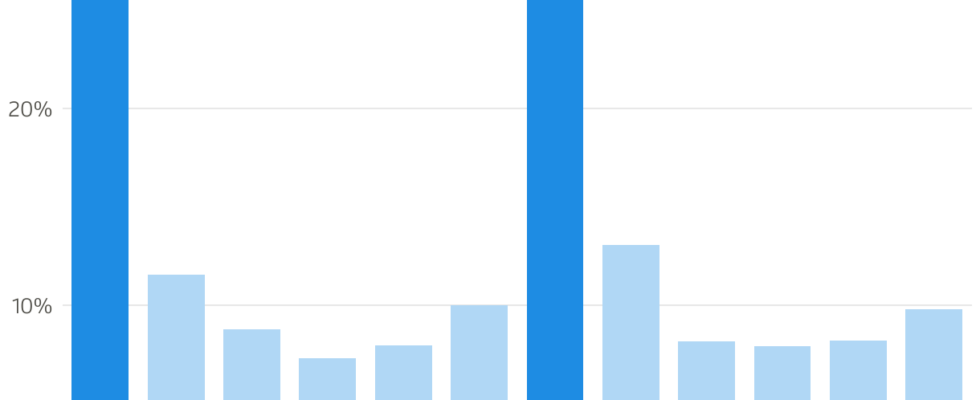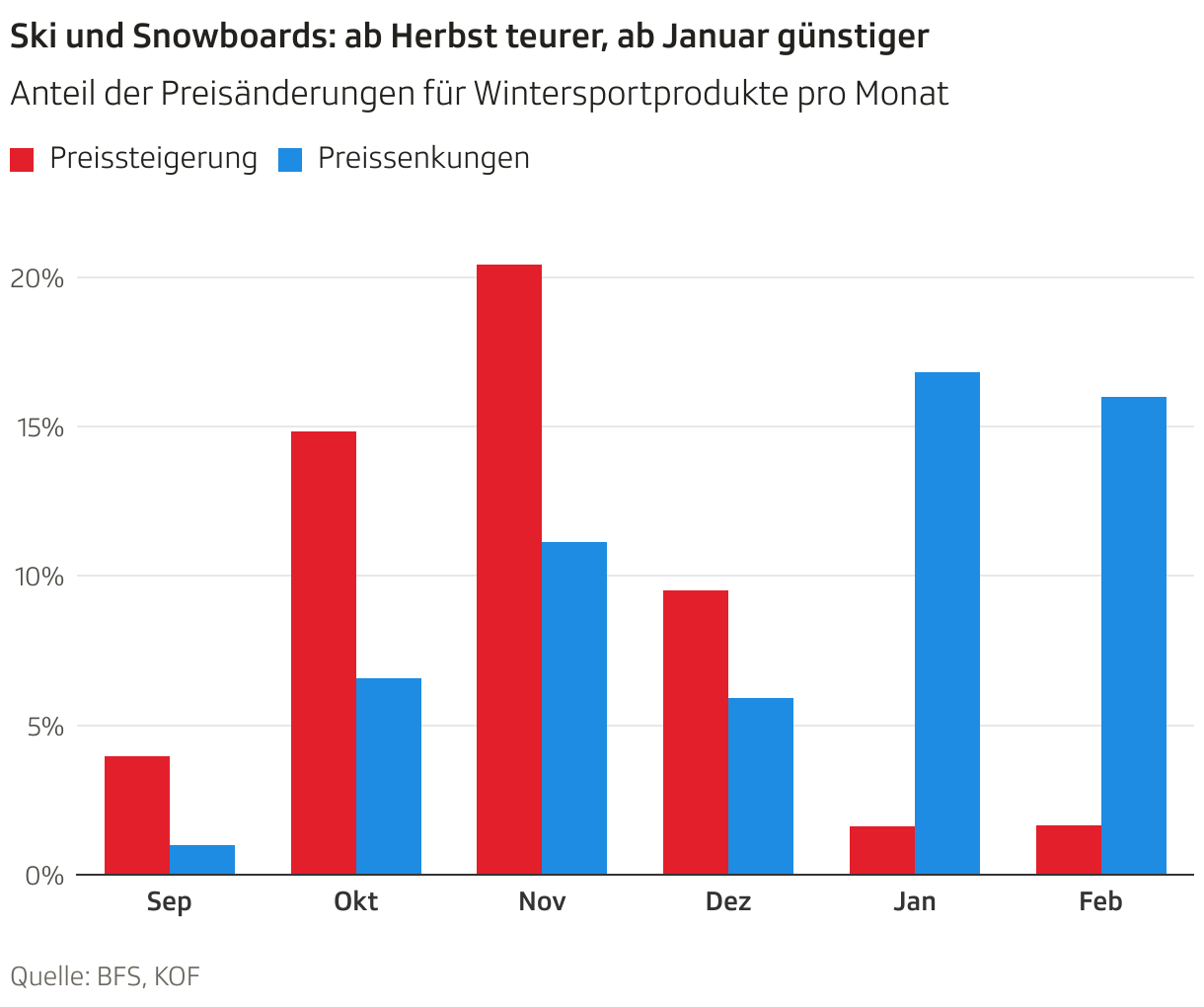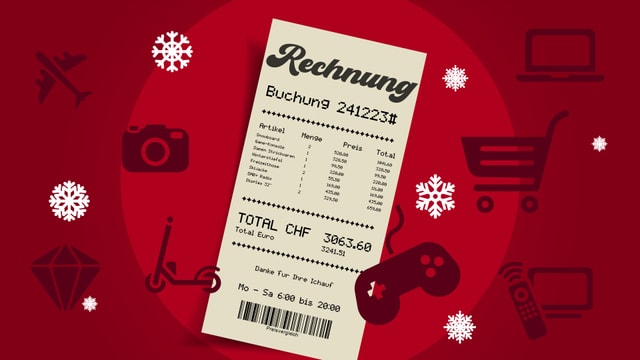Contents
Exclusive analysis for hundreds of selected products and services shows in which months prices fall and in which they rise. The good news: The fear of a “Christmas surcharge” is unfounded.
The holidays are just around the corner, but the gift for your loved ones is still missing. Because from January to today, no time was taken for it. Who does not know that? And so there is no choice but to make a pilgrimage to the full shops – worried that shopping is particularly expensive at this time of year.
First of all, the good news: If you don’t buy your gifts until December, you don’t necessarily have to pay a Christmas surcharge. There is no statistical evidence for this, says Pascal Seiler, who scientifically examines price developments at the Economic Research Center at ETH Zurich (KOF): “We observe price increases, price reductions and discounts in equal measure for the majority of products throughout the year.”
Products with frequent price drops in December
But individual products stand out because of their price changes before and after Christmas – such as dresses, which are considered popular Christmas gifts.
Clothes and winter sports items: discount battle in January
A look at the price data shows: It’s better not to buy a cashmere sweater for dad or a ski jacket for your daughter until January. Then the prices for clothes fall more often than for any other product.
“Coats and jackets for women” are the extreme example: 43 percent of the prices offered by retailers are reduced compared to the previous month. The dealers obviously have the motto: Everything has to go.
Two phenomena come together here: Christmas shopping is over and: “Clothes are seasonal products. The dealers don’t want to be stuck with old goods and are offering generous discounts in January. This happens again in July when the summer clothes have to go,” says economist Seiler.
A similar pattern can be seen with winter sports items such as skis or snowboards. The highest demand here is when the snow comes, says Thomas Morand, head of Bächli Bergsport. So in November and December.
However, Bächli attaches great importance to stable prices and is therefore foregoing the big discount battle in January. But in the new year, his products will gradually move into his own outlet store: “Customers who want to make a larger investment will come to us from May and can then get cheaper ski equipment.”
Be careful with game consoles and TV sets
But not all goods are cheaper in the new year than in December. Prices for “game consoles and electronic games” fall more often than they rise in December. In January, price increases and price reductions balance each other out. “The Christmas season is extremely important for the gaming industry and for us,” says Thomas Triet, Head of Purchasing at Mediamarkt Switzerland. Gaming items were among the big sales drivers. The producers would deliberately supply Mediamarkt at lower prices in order to boost sales.
For televisions, prices also fall more often than they rise in December. For PCs, the changes are balanced in both December and January. It’s worth taking a closer look at these products. “There is less discount on newer models. And for models that have reached the end of their life cycle, the discounts are even more attractive,” says Triet.
Why retailers adjust their prices
The pricing strategies of Swiss companies often remain a well-kept secret. A KOF survey of almost 400 retailers in 2022 at least sheds some light on the matter.
Accordingly, the average Swiss retail company changes its prices quarterly. However, the entire spectrum can be observed: from daily adjustments (“dynamic pricing”) to adjustments once a year. The pricing of online offers is more dynamic than in stationary retail. The reason is the increased price transparency and competitive situation.
According to their own statements, the majority of retailers increase or decrease their prices, primarily depending on their own cost structure. They cite supplier markups, higher personnel costs, and higher material and energy costs as important influencing factors. “Less important” are the prices of competitors and demand from customers.
Inflation: the perfect reason for price increases
Concern for customer relationships has a significant influence on pricing. Price increases always run the risk of upsetting customers. That’s why companies usually proceed cautiously.
“Research shows that consumers are more likely to accept price increases if they are related to factors that are not directly under the control of companies,” says economic researcher Seiler. So price increases in an inflationary environment, for example.
If companies want to make “excessive profits” from high customer demand, customers don’t appreciate it. This explains why many companies forego moon prices in the shopping month of December.


